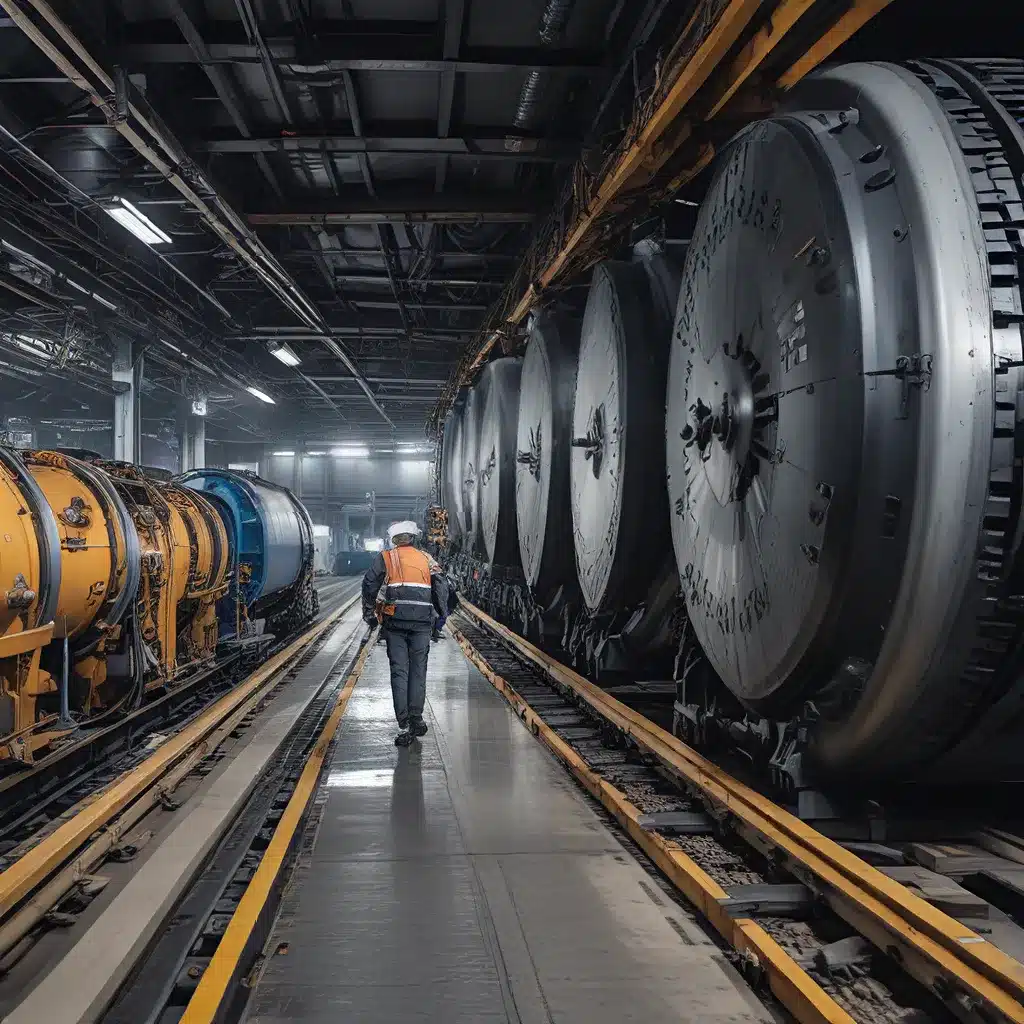
In the rapidly evolving landscape of the modern world, the transportation sector has emerged as a crucial driver of economic growth and social progress. As the demand for efficient, reliable, and eco-friendly transportation solutions continues to rise, the industry is undergoing a profound transformation, fueled by the power of sensor networks and Internet of Things (IoT) technologies.
At the forefront of this revolution is the concept of digital twins, which have the potential to revolutionize the way we approach predictive maintenance in the transportation sector. By integrating advanced sensor networks and data analytics, digital twins offer unprecedented insights into the real-time performance and condition of critical transportation assets, enabling proactive and data-driven decision-making.
Embracing the Power of Digital Twins
A digital twin is a virtual representation of a physical asset, process, or system that is continuously updated with real-time data from a network of strategically placed sensors. In the transportation sector, digital twins can be applied to various assets, such as vehicles, infrastructure, and entire transportation networks.
Sensor-networks.org explains how digital twins leverage the wealth of data generated by these sensor networks to create a highly accurate and dynamic model of the physical world. By continuously monitoring the performance, condition, and behavior of transportation assets, digital twins can identify patterns, detect anomalies, and predict potential failures before they occur.
Transforming Predictive Maintenance
Predictive maintenance is a game-changing approach that leverages data and analytics to anticipate when equipment or infrastructure will require maintenance, repair, or replacement. In the transportation sector, this is crucial for ensuring the reliability, safety, and longevity of critical assets, such as vehicles, bridges, and rail systems.
The integration of digital twins with sensor networks revolutionizes predictive maintenance by providing a comprehensive, data-driven understanding of asset performance. Sensors embedded within transportation assets continuously monitor a wide range of parameters, including vibration, temperature, fuel consumption, and wear-and-tear. This real-time data is then fed into the digital twin, enabling advanced analytics and machine learning algorithms to identify patterns, predict failures, and recommend optimal maintenance strategies.
Optimizing Transportation Asset Management
By harnessing the power of sensor-driven digital twins, transportation organizations can achieve a significant improvement in asset management and operational efficiency. Some of the key benefits include:
-
Improved Asset Reliability: Digital twins provide early warning signals of potential failures, allowing transportation operators to proactively address issues before they disrupt operations. This enhanced predictability leads to increased asset uptime and reduced maintenance costs.
-
Enhanced Safety: Sensor-based monitoring and predictive maintenance enable transportation organizations to identify and address safety-critical issues before they escalate, ensuring the well-being of passengers, operators, and the general public.
-
Reduced Operational Costs: By optimizing maintenance schedules and minimizing unplanned downtime, digital twins help transportation companies save on repair and replacement expenses, as well as operational costs associated with disruptions.
-
Improved Sustainability: Digital twins can also contribute to sustainability efforts by identifying opportunities for energy efficiency, optimizing transportation routes, and reducing the environmental impact of transportation operations.
Securing the Digital Twin Ecosystem
As the transportation sector embraces the transformative power of sensor-driven digital twins, it is crucial to address the inherent security challenges that come with the integration of IoT technologies.
Industry 4.0 and IoT technologies are revolutionizing manufacturing by enabling connected machines and data-driven insights, and the same principles apply to the transportation sector. However, the increased connectivity and data-sharing within the digital twin ecosystem also introduce potential vulnerabilities that must be addressed.
Robust cybersecurity measures, such as end-to-end encryption, secure data storage, and access control, are essential to protect the integrity and confidentiality of the data powering digital twins. Additionally, regular security audits, software updates, and employee training can help mitigate the risk of cyber threats.
Powering the Future of Transportation
As the transportation sector continues to evolve, the integration of sensor-driven digital twins and predictive maintenance is poised to redefine the industry’s landscape. By harnessing the power of sensor networks, IoT, and data analytics, transportation organizations can unlock a new era of enhanced asset reliability, improved safety, and optimized operational efficiency.
The factory floor undergoes a metamorphosis as Industry 4.0 reshapes traditional operations, and the same is true for the transportation sector. Connected machines and data-driven insights are replacing siloed approaches, empowering transportation providers to make proactive, data-informed decisions that drive innovation, sustainability, and long-term competitiveness.
As the future of transportation unfolds, the fusion of digital twins and sensor networks will undoubtedly play a pivotal role in unlocking the full potential of the industry, paving the way for a more efficient, reliable, and eco-friendly transportation ecosystem that serves the evolving needs of our modern world.